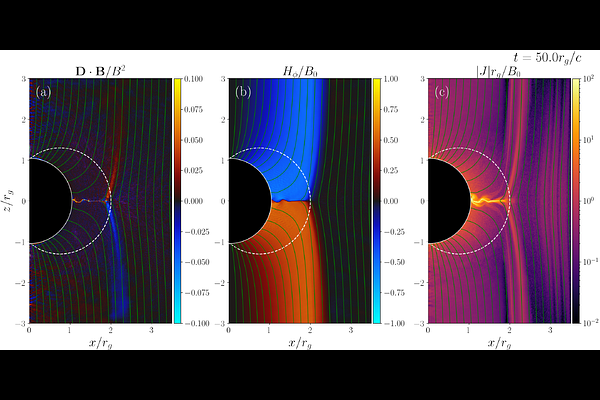Introducing APERTURE: A GPU-based General Relativistic Particle-in-Cell Simulation Framework

Introducing APERTURE: A GPU-based General Relativistic Particle-in-Cell Simulation Framework
Alexander Y. Chen, Martin Luepker, Yajie Yuan
AbstractLow-luminosity Active Galactic Nuclei (AGN) are believed to be surrounded by a collisionless, highly magnetized accretion flow. As a result, Particle-in-Cell simulations are the best tools to study the immediate vicinity of the event horizons of these supermassive black holes. We present a GPU-based general relativistic particle-in-cell (GRPIC) code framework called Aperture. Aperture is developed in C++, with compute kernels written in CUDA and HIP to take advantage of the massive acceleration modern GPUs enable. The code is organized in a fully modular way, allowing easy extensions to new physics problems. In this paper, we describe in detail the particle pusher, field solver, and charge-conserving current deposition algorithms employed in Aperture, and present test cases to validate their correctness. Then, we apply the code to study spark gaps and plasma injection in black hole magnetospheres. We find that the apparent location and time-evolution of the gap depend on the observer. Our results reconcile the previous conflicting findings from 1D and 2D simulations in the literature.